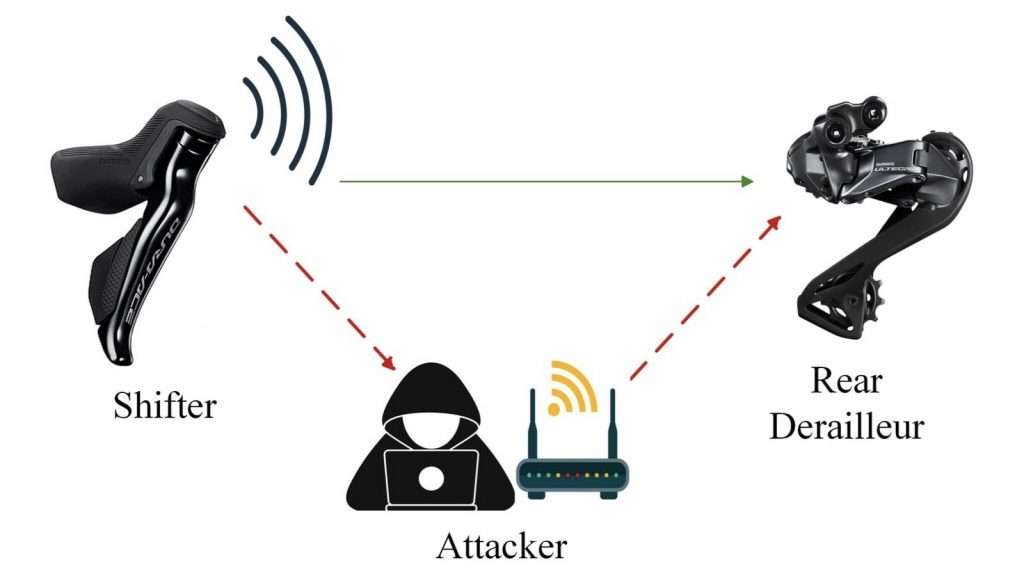
- Introduction to Bluetooth Technology
- How Bluetooth Works
- What is Bluetooth Hacking?
- Common Bluetooth Hacking Techniques
- Tools Used in Bluetooth Hacking
- Real-World Examples of Bluetooth Hacks
- How to Detect Bluetooth Hacking
- Preventing Bluetooth Hacking
- The Future of Bluetooth Security
- Conclusion
Introduction to Bluetooth Technology
Bluetooth is a wireless technology that connects and exchanges data over short distances, usually about 10 meters (33 feet). It operates on the 2.4 GHz ISM (Industrial, Scientific, and Medical) band and is excellent for personal and portable devices like smartphones, headphones, fitness trackers, and IoT gadgets. Designed to be energy efficient and versatile, Bluetooth supports a wide range of applications, from audio streaming and file sharing to device pairing and smart home automation. Simplicity and widespread adoption have made Bluetooth a cornerstone of modern wireless communication. Cybersecurity Training Courses ubiquity also makes it a target for potential security vulnerabilities, thus making the understanding of its functionality and associated risks highly important.
Are you curious to know more about Cybersecurity ? Take advantage of our comprehensive online Cyber Security Online Training
How Bluetooth Works
Bluetooth technology operates based on short-wavelength UHF radio waves in the 2.4 GHz frequency band. The process of this is known as frequency hopping. It involves devices changing 79 channels in the case of Classic Bluetooth and 40 channels in Bluetooth Low Energy at high speed in a way that causes minimum interference. Here’s how it works:
- Pairing: By exchanging security keys, the devices form a trusted relationship, which ensures smooth and secure connections in the future.
- Data Transfer: After pairing, devices communicate in a master-slave architecture where one device controls the connection while the other follows commands.
- Low Energy Consumption: BLE focuses on minimal power consumption, Cyber Defamation making it suitable for devices such as wearables with long battery lifetimes.
- Bluetooth’s adaptability: In multiple use cases and evolving versions, such as Bluetooth 5.0, has established it as an important component in wireless communication.
What is Bluetooth Hacking?
Bluetooth hacking refers to the exploitation of vulnerabilities in Bluetooth technology for unauthorized access to devices or Database Security. Because Bluetooth is intended to allow seamless communication between devices, it becomes an attractive attack vector for cybercriminals. Such attacks usually involve:
- Intercepting data.
- Gaining control of a device.
- Leveraging Bluetooth connectivity to deploy malware.
- Bluejacking Sending unsolicited messages or data to Bluetooth-enabled devices. It is harmless but annoying.
- Bluesnarfing is the act of accessing a device’s information in Cybersecurity Training Courses, such as contacts, messages, and files, without permission by taking advantage of Bluetooth vulnerabilities
- Bluebugging The hijacking of a victim’s device to make calls, send messages, or access sensitive information without his consent.
- Bluetooth Spoofing involves pretending to be a trusted device to dupe users into connecting, allowing the attacker to intercept or manipulate data.
- Man-in-the-Middle (MITM) Attacks Intercepting and changing the communication between two devices without the user’s knowledge.
- Bluetooth Worms and Viruses Malware is designed to spread via Bluetooth connections, infecting multiple devices in the vicinity.
- Bluetooth Sniffers: The tools used for sniffing are Wireshark or Ubertooth. These tools capture and analyze Bluetooth traffic, pointing out vulnerabilities in the communication.
- Bluescanner: Bluescanner is a reconnaissance tool for discovering discoverable Bluetooth devices in the surrounding area, Session-hijacking which is useful during an attack.
- BlueMaho: An attack framework that combines several Bluetooth exploits to perform penetration testing and vulnerability analysis.
- Bluebugger: Bluebugger is a tool specifically designed for bluebugging attacks, used to take control of the device without authorization.
- BTcrack: It is a utility that cracks the PIN codes used in Bluetooth pairing. It enables unauthorized access to devices.
- This vulnerability compromised billions of Bluetooth-enabled devices and allowed attackers to execute code, steal data, and take control of devices without requiring any user interaction. The attack took advantage of vulnerabilities in Bluetooth protocol implementations.
- Contact tracing apps using Bluetooth in the wake of the COVID-19 pandemic exposed users to the potential for tracking and data theft.
- Researchers showed that in-car Bluetooth systems could be vulnerable to attack, which would allow an attacker to disrupt infotainment systems or gain deeper access to controls within the vehicle.
- Some fitness trackers have been hacked to extract sensitive personal data, such as activity logs or location history.
- Disable Bluetooth When Not in Use: Keep Bluetooth off, which prevents an attacker from scanning and exploiting your device.
- Enable Non-Discoverable Mode: Prevent your device from broadcasting its availability to nearby attackers.
- Use Strong PINs: Choose complex PINs for pairing, and do not use default codes such as “0000” or “1234.”
- Install Updates: Update firmware and the operating system on your device regularly to patch known Bluetooth vulnerabilities.
- Avoid Public Pairing: Only pair devices in trusted, private environments to reduce the risk of interception.
- Monitor Paired Devices: Regularly check and remove unrecognized or unnecessary devices from your Bluetooth settings.
Bluetooth hacking is increasing, raising concerns about the discovery of more than one device in public spaces. People who need to guard their Bluetooth-enabled devices must learn the dangers and common techniques used by attackers.
To learn about different Cybersecurity techniques, sign up for our Cyber Security Online Training right now!
Common Bluetooth Hacking TechniquesTools Used in Bluetooth Hacking
Transform Your Career with Cyber Security Knowledge Enroll in ACTE’s Cyber Security Expert Masters Program Training Course Today!
Real-World Examples of Bluetooth Hacks
How to Detect Bluetooth Hacking
Unfamiliar pairings in your Bluetooth connection list may indicate unauthorized access attempts, signalling potential Endpoint Security threats. Rapid battery drain could be a sign of malicious Bluetooth activity running in the background. If your device becomes sluggish or unresponsive, it might be due to unauthorized data access or interference. Unexpected pop-ups or pairing requests could suggest an attempted hack. To detect anomalies or unauthorized activity, Bluetooth traffic can be monitored using tools like Ubertooth or Wireshark, which help identify suspicious connections and potential security breaches.
Preparing for Cyber Security job interviews? Check out our Cyber Security Interview Questions and Answers now!
Preventing Bluetooth Hacking
The Future of Bluetooth Security
Stronger encryption standards enhance data protection during transmission, reducing the risk of unauthorized interception. Secure pairing methods, such as biometric-based or multi-factor authentication, prevent unauthorized access. AI-powered threat detection leverages machine learning to identify and block suspicious Bluetooth activities in real-time. However, backward compatibility challenges arise as newer security measures must balance innovation with support for older devices. Improved firmware management ensures timely updates and security patches for IP Subnet , minimizing vulnerabilities and maintaining overall system integrity.
Cybersecurity Sample Resumes! Download & Edit, Get Noticed by Top Employers! DownloadConclusion
Bluetooth technology has revolutionized connectivity, but its widespread use makes it a target for cyberattacks. Understanding the tools and techniques used in Bluetooth hacking, along with real-world examples, underscores the importance of vigilance. Cybersecurity Training Courses learning how to detect and prevent hacking attempts and staying updated on advancements in Bluetooth security, users can enjoy the benefits of this technology while minimizing risks. As Bluetooth advances, robust security practices will always be important to protect personal data and ensure device integrity.






